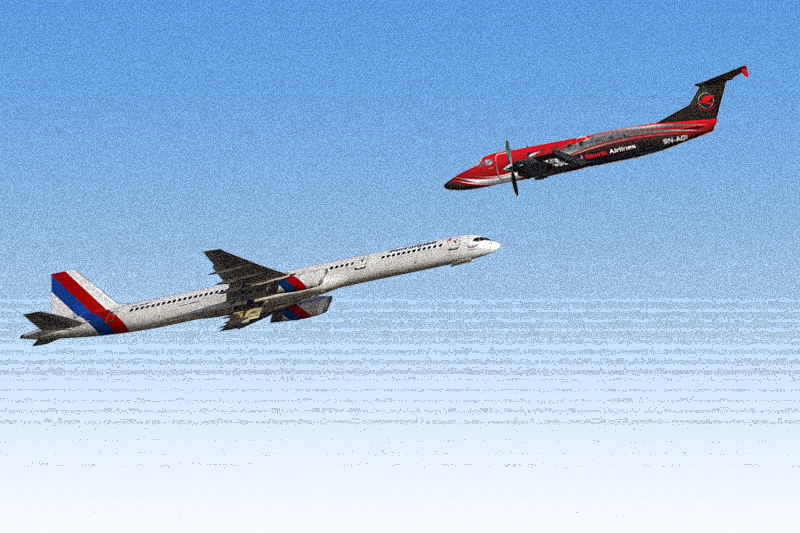Averted mid-air collision reveals worrisome facts of air navigation
Kathmandu, October 17
A probe of the mid-air near-collision between Nepal Airlines Boeing 757 and Simrik Airlines B1900C aircraft that occurred over Bharatpur last month has once again revealed worrisome facts about the state of air navigation in the Nepali skies.
Though the flight crew was able to take evasive action prompted by the on-board collision avoidance system, the lack of compliance with Nepali aircraft operations requirements has once again been exposed, officials privy to the investigation told this daily.
In its final report prepared by an investigation committee led by Sobha Shrestha, chief at Department of Air Navigation Services at Civil Aviation Authority of Nepal, the panel mentioned that the crew of both Doha-bound Boeing flight and Simrik Air flight returning from Bhairahawa to Kathmandu were not familiar with each other’s traffic when the near-collision occurred on September 4.
While the flight operations requirement, issued by CAAN, specifies the minimum equipment and training qualifications needed by an airline operator for operating commercial flights, the FOR stipulations mysteriously remain silent on collision avoidance systems for smaller aircraft such as the B1900C (carrying 19 or less passengers) and this condition has been adroitly used by many operators for installing only the much cheaper Traffic Alert and Collision Avoiding System (TCAS)-I equipment rather than the TCAS-II that provides higher level of safety.
“In fact, the Annex of International Civil Aviation Organisation on aircraft operation does not even mention TCAS-I in its literature.” Clearly, the fact that CAAN continues to provide ‘necessary exemptions’ to operators even on safety-related matters without any in-depth safety assessment is terrifying, an industry insider admitted.
The investigation report seen by this daily also points to the prevailing attitude of irresponsibility that is rife among the management of air traffic control whereby deviations from standard operating procedures and minimum staffing levels are merrily accepted. The worrisome state of continued ATC equipment malfunction remains condoned, despite the fact that CAAN provides certified air traffic management maintenance personnel training abroad.
The report also points to the lack of timely warning on the part of the air traffic controller on duty in relation to the air-miss by the short-term collision alert feature of the present radar provided by Japan in 1998. The short term conflict alert safety net is an important back-up for avoiding head-on collisions, an ATC explained, adding that “its non-performance in the incident is alarming.” Also, the hazards arising from the improper installation of the electronic-strip under the ATC automation part of the very recent Asian Development Bank-funded air transport capacity enhancement project is listed as a contributing cause behind the near collision, according to the report.
FINDINGS
- ATC attempted to separate two traffic by clearing B1900C for 13,500ft and Boeing 757 for 12,500ft initially
- Due to disturbance in communication with the B1900C crew, ATC delivered clearance to Boeing to maintain 12500ft in the third attempt
- Boeing crew misunderstood the instruction and the incident occurred
- ATC procedures supervisor was having snacks and could not monitor the air traffic and controllers
- He could not support or intervene to resolve the conflict
- As per techlog, Boeing 757 has TCAS-II that can deliver Resolution Advisory, which was functional during the flight
- The B1900C has only TCAS-I and can give only traffic advisory






